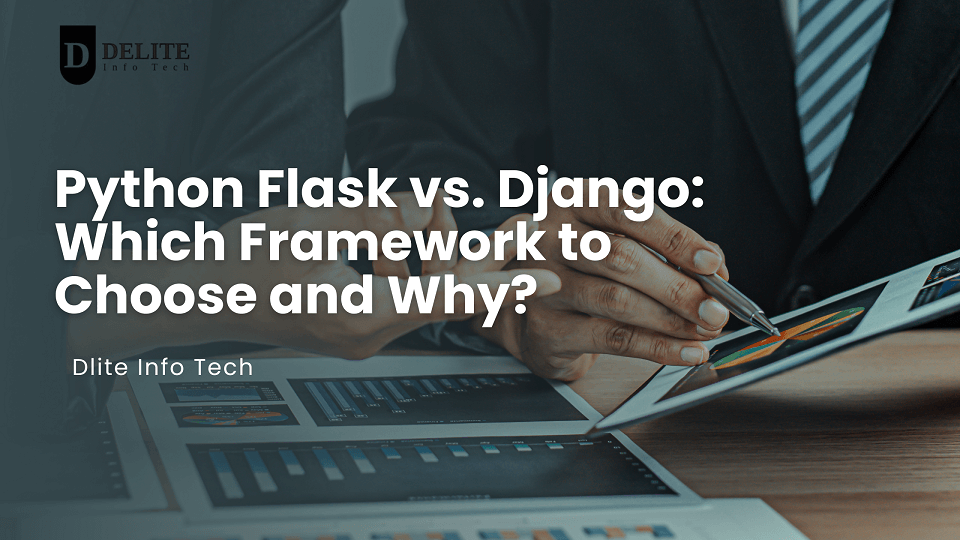About Python Flask vs. Django: Which Framework to Choose and Why?
When it comes to web development in Python, Flask and Django are two of the most popular frameworks, each with its own strengths and ideal use cases. Choosing between them can be challenging, especially if you’re unfamiliar with their nuances. This article provides a comprehensive comparison of Flask and Django, examining their features, benefits, and scenarios where one might be preferable over the other.
Flask Overview
Flask is a micro-framework designed to be lightweight and flexible. Developed by Armin Ronacher and released in 2010, Flask follows the WSGI (Web Server Gateway Interface) standard and is often praised for its simplicity and modularity.
Key Features of Flask
Minimalist Approach: Flask provides a minimalistic core with essential components, allowing developers to choose additional libraries and tools as needed. This modular approach lets you build applications from scratch and integrate only the components you require.
Flexibility: Unlike Django, Flask does not impose a particular way of doing things. This flexibility allows developers to design their application architecture according to their specific needs.
Simplicity and Learning Curve: Flask’s straightforward design makes it easy for beginners to grasp. Its simple API and minimal boilerplate code mean that new developers can quickly get started and build functional applications.
Extensive Documentation and Community Support: Flask has a wealth of documentation and a vibrant community, which can be invaluable for troubleshooting and learning.
Built-in Development Server: Flask includes a built-in server for development purposes, simplifying the testing and debugging process during development.
Pros of Flask
- Flexibility and Customization: You can select components and libraries according to your project’s needs, providing greater control over the application architecture.
- Lightweight and Fast: Flask’s minimalist approach means it has less overhead, which can lead to faster performance for smaller applications.
- Easy to Learn: Its simplicity and lack of enforced structure make Flask a good choice for beginners and those who prefer a straightforward approach.
Cons of Flask
- Limited Built-in Features: Unlike Django, Flask does not come with built-in features such as an ORM (Object-Relational Mapping), authentication, or an admin interface. This means you need to integrate these features manually.
- Scalability Challenges: While Flask can handle small to medium-sized applications efficiently, scaling it to large, complex applications may require additional effort and architecture planning.
Django Overview
Django is a high-level web framework that emphasizes the “batteries-included” philosophy. Created by Adrian Holovaty and Simon Willison and first released in 2005, Django provides a comprehensive set of tools and features to facilitate rapid development and clean, pragmatic design.
Key Features of Django
Full-Featured Framework: Django comes with a wide array of built-in features, including an ORM, authentication system, admin interface, and form handling. These components streamline development and reduce the need for third-party libraries.
Conventional Structure: Django follows a “convention over configuration” approach, providing a structured framework with predefined conventions. This structure helps developers follow best practices and build applications more efficiently.
Admin Interface: One of Django’s standout features is its automatic admin interface, which provides a user-friendly backend for managing application data and users without writing additional code.
ORM (Object-Relational Mapping): Django’s ORM simplifies database interactions by allowing developers to work with Python objects instead of SQL queries. This abstraction makes it easier to manage database schema and perform CRUD (Create, Read, Update, Delete) operations.
Security Features: Django includes built-in security features such as protection against CSRF (Cross-Site Request Forgery), XSS (Cross-Site Scripting), and SQL injection attacks, which helps developers build secure applications.
Pros of Django
- Comprehensive Toolset: The “batteries-included” approach means Django comes with a wide range of built-in features, reducing the need for third-party libraries and speeding up development.
- Structured Framework: Django’s conventions and project structure promote best practices and maintainable code, making it easier to manage larger projects.
- Admin Interface: The automatic admin interface saves time by providing a ready-made backend for managing application data.
- Security: Django’s built-in security features help protect against common web vulnerabilities and ensure robust security for applications.
Cons of Django
- Less Flexibility: Django’s conventions and built-in features can be restrictive if you need a high degree of customization or prefer a more flexible approach.
- Heavier Framework: Django’s comprehensive feature set can introduce additional overhead, which might impact performance for smaller or simpler applications.
Flask vs. Django: Choosing the Right Framework
When deciding between Flask and Django, consider the following factors based on your project’s needs:
Project Size and Complexity
- Flask: Ideal for smaller to medium-sized projects or applications where you need more control over components and architecture. Flask’s lightweight nature makes it suitable for microservices, APIs, or simple web applications.
- Django: Best for larger, more complex projects that benefit from a structured framework and built-in features. Django’s comprehensive toolset and convention-based approach are well-suited for content management systems, e-commerce platforms, and applications requiring robust features.
Development Speed
- Flask: Provides flexibility but may require more time to integrate additional features and components manually. Suitable for projects where customization and control are prioritized over rapid development.
- Django: Facilitates faster development with its built-in features and predefined conventions. Ideal for projects that need a quick turnaround and benefit from the ready-made tools provided by the framework.
Learning Curve
- Flask: Generally easier for beginners to learn due to its simplicity and minimalistic design. Offers a good introduction to web development with Python.
- Django: May have a steeper learning curve due to its comprehensive feature set and conventions. However, it provides a robust foundation for developers who need to build feature-rich applications.
Flexibility vs. Structure
- Flask: Offers greater flexibility and control, allowing you to choose components and design your application architecture according to your preferences.
- Django: Provides a more structured approach with built-in tools and conventions, which can streamline development but may limit customization options.

